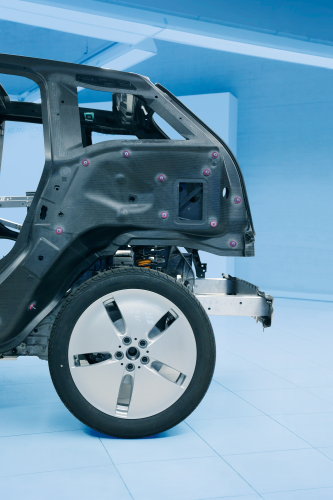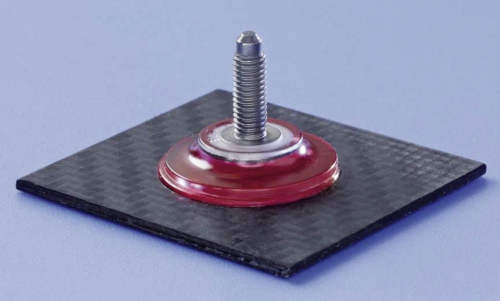

Video: The use of ONSERTS in BMW’s automated production process.
ONSERT can be used with composites such as carbon fibre reinforced plastic (CFRP), which is finding increasing use in the automotive industry, as well as thin sheet metals, plastics and other materials.
The joining technique combines the advantages of bonding technology with those of detachable screwed connections. Fastening elements, such as threaded metal bolts, are fitted a transparent plastic base, which is bonded to the composite material using a light-curing adhesive.
A key feature of this technique is its speed, explains DELO. The adhesive is cured in around 4 seconds using an LED lamp. It is also possible to automate this process.
The bonded connection can be loaded immediately. Bonded bolts with a base diameter of 25 mm achieve a pull-off strength up to 2000 N on CFRP.
When applying higher forces, a predetermined breaking point in the base ensures that the composite laminate remains intact and no fibres are torn out.
Developed for the automotive, aviation and white goods industries, ONSERTs are suitable for a broad variety of tasks where components must be fixed. Possible applications include cable harnesses, control units, sensor retainers, brake lines, cladding or exterior attachment components.




